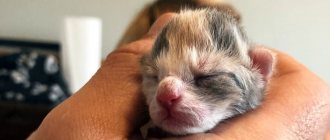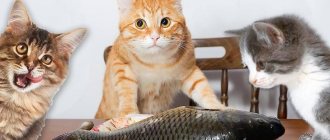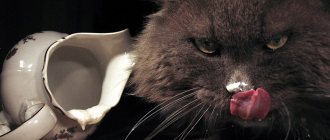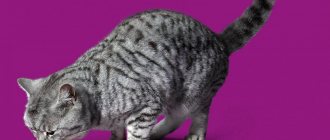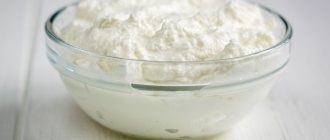Owners and breeders of wayward, proud and at the same time affectionate mustachioed striped animals have long been arguing about how to properly feed their pets. But so far there is no consensus on this matter. Some are adherents of ready-made food, others - natural food, and still others are inclined towards mixed feeding of their four-legged friends. In the last two cases, the owners have to create a varied menu from ordinary products. But not all of them are allowed for cats. Is cheese included in the list of permitted foods for these animals, what types and in what quantities can they be given?
Hard cheeses
These varieties should not be offered to your cat. Firstly, they contain a very high percentage of fat, and secondly, there is a lot of salt, spices, and very often all kinds of synthetic additives are present. Despite the predilection of many cats for everything soft and fatty, high-calorie hard cheeses will cause a lot of harm to their health. Even worse are processed cheeses, which are made from cheese production waste.
Soft cheeses
Soft cheeses do not undergo such complex processing and are conditionally suitable for a cat’s diet. However, some varieties contain a lot of salt, which is extremely undesirable for a cat. Due to their natural characteristics, cats drink little. Figuratively speaking, every extra grain of salt is a stone in the foundation of chronic diseases (primarily urolithiasis).
If you really want to treat your pet with cheeses, then you should pay attention to varieties like Adyghe or mascarpone, they contain minimal additives.
How often can you offer your cat cheese? It is advisable to do this as rarely as possible (no more than once a week) and in very small portions. Even though the cat had the opportunity to appreciate the taste of, for example, maasdam, and she persistently begs for it every time it appears on the master’s table.
Can cats have liver?
Veterinarians note that chicken and beef liver for cats can be a good addition to the main diet if the pet eats natural food. The by-product is rich in vitamins and minerals, and therefore improves the condition of the coat and enhances the natural immune defense. Low fat content will help prevent obesity in your pet. However, liver cannot be the main ingredient of the diet. Cat owners note that their pets are very fond of this offal, but it is important to give it limited, otherwise the cat will develop diarrhea or constipation.
Is it possible to give a cat cheese?
Cheese is rich in vitamins, microelements, fatty acids and easily digestible proteins. This product can be given to cats, but in moderation, very carefully, and you should choose the right varieties. Soft rennet and whey cheeses are suitable for most pets. Smoked products should not be given, they cause allergies, vomiting and have a bad effect on the liver, kidneys and pancreas.
What kind of cheese can you give your cat?
Cheese is produced from milk with the help of coagulating enzymes, various bacteria and mold. Therefore, if a cat has lactose intolerance, then it will not be able to eat this food. However, due to the way they are processed, cheese products are easier to digest than milk.
The nutritional value
They contain a lot of proteins (up to 25%), polyunsaturated fatty acids (up to 60%) and microelements (up to 3.5%), especially calcium and phosphorus. In addition, the product contains substances that stimulate appetite and stimulate the release of digestive enzymes. Cheese contains a large amount of vitamins A, B1, B2, B5, B12, C, D, E, PP. Its composition is similar to milk and includes valuable substances in the same proportions.
Because of this, cheese in general can be given to a cat, as well as fermented milk products (cottage cheese and kefir). However, this product contains too much fat (on average 40-50%), so it can only be used as a treat, and not as the main component of the daily diet.
Lactose intolerance
Among cats, it is quite rare to find individuals who suffer from complete lactose intolerance. However, pathology in these animals cannot be completely excluded. Therefore, it is advisable for the owner to check whether the pet has such a pathological feature, and for this you can conduct a simple test:
- The animal should be given some dairy or fermented milk product, such as milk, kefir or cheese.
- During the first 24 hours, it is recommended to monitor the pet’s condition to see if it exhibits one or more symptoms of an allergic reaction: diarrhea (loose, watery stools), bloating, flatulence, nausea, vomiting, pain in the abdominal area. You should look into your pet's tray; it should not become more dirty than usual.
If there are no such signs, the cat behaves as usual and its condition has not changed, which means that the digestive system copes well with fermented milk products and has the enzymes necessary for processing lactose. In this case, the cat can be periodically pampered with sour milk, including a small slice of cheese.
Classification
There are many types of cheeses based on the method of preparation:
- Fermented milk products . They are obtained from skim milk, which is subjected to the action of lactic acid culture. They often add cottage cheese, sour cream, salt, and butter. Spices may include cocoa, onions, coffee, chocolate and vanillin. Cheeses without additives (with cottage cheese or milk) are allowed to be given to cats, but all others are not allowed, since spices often cause allergies and poisoning.
- Serum . It is made from whey, which is formed after the cheese-making procedure (that is, from recycled materials). Because of this, they contain a lot of albumin and relatively little fat - 15-25%. The best option for a cat would be Adyghe cheese due to its quality, lack of spices, dangerous additives and low price. This product is rich in vitamins and microelements; most of them contain 15-25% of the animal’s total daily requirement for these substances in 100 grams.
- Molds . These are cheeses that have been exposed to various molds, most often from the genus Penicillium. Their fat content is average - 25-35%, no spices or additives are added, since the taste is already good due to the action of mold. For these reasons, moldy cheeses can be fed to cats, but the first time you should give them a little, as an allergic reaction to the fungi is possible.
- Smoked . In the Russian Federation, the most common are suluguni and sausage cheese. Smoking imparts a special taste due to processing at high temperatures. After this, the cheese is dehydrated, saturated with bacteriostatic, preservative substances and carcinogenic polycyclic hydrocarbons. This product should not be given to cats due to the high content of salts and preservatives.
- Rennets . Produced from milk under the action of rennet - rennin. All of them have a fairly high fat content - 40-50%, which is why they should not be given to pets often. Among rennet, only hard and soft cheeses are suitable for feeding cats. Brine products should not be given to animals due to the large amount of salt and spices in the composition.
Credo of feeding cottage cheese
Try to avoid sour cottage cheese and, as was said earlier, do not take store-bought, but look for homemade, farm-made one.
Malo-: illiterate, feed cats curd product or sweet curd - such foods are harmful to cats. Before giving the normal amount, try starting with a small portion and look for any allergic reactions. Optimum oiliness is 9% or less. However, it is not appropriate to use completely low-fat cottage cheese, since it does not bring any benefit to cats. Little kittens need cottage cheese 3-4 times every week in order to provide the body with a normal amount of calcium. For adult cats, the weekly amount of cottage cheese is halved.
If you want to create a current cat treat, there are some options, but you need to take into account the increase in fat content from many similar additives, so you need to watch the quantities. Cottage cheese with yolk will be incredibly tasty for a cat, but that’s all with sour cream. Do not add protein, it is harmful to cats.
What kind of cheese should you not feed your cat?
A cat will not eat cheese if it is harmful to it. At the same time, she can beg for it, since the smell and taste are sometimes very different. Because of this, it is impossible to know how appetizing a product is by its aroma. A pet may ask for foods that are inedible for it, but in most cases it will not eat them.
Smoked cheeses should be completely excluded from the diet, as they may contain dangerous carcinogens. In addition, modern smoking occurs not so much due to temperature, but due to the action of chemicals that are added to the starter to speed up the process. Such products are harmful to the liver and kidneys.
Is it possible to give cats raw liver?
When purchasing a pet, you need to understand the responsibility that falls on your shoulders. Proper nutrition is the key to your pet’s health, but choosing natural food or dry food is everyone’s personal choice. The basis of any diet is proteins, but some are traditionalists and give the cat only meat, milk, fish, while others, due to their desire or circumstances, feed them exclusively with balanced dry food.
Veterinarians, as a rule, only recommend specialized expensive food, but the owner does not always agree with their opinion. Many people feed their pet exclusively natural food, but is it possible to feed raw meat, such as liver?
Why cheese can be dangerous
Cheeses can be dangerous for many reasons. The greatest harm comes from salt, fat and spices:
- Cheeses contain a lot of salt - 1.5-2.5% of the total weight, sometimes up to 7%. Cats are predisposed to urolithiasis, which is caused by narrow and tortuous urinary tracts. They must exclude salt from their diet, and cheese contains it in increased quantities.
- The amount of fat reaches 60-70% . Such an unnaturally large amount of fatty acids does not occur in nature, so the liver and pancreas of cats are not adapted to digest such products. Why cheeses can cause digestive upset.
- Spices and various additives are added to many cheeses . At best, they will be of plant origin (cumin and others). But in most situations these include chemical antioxidants, thickeners, preservatives, dyes, emulsifiers and other substances. All these compounds can cause an allergic reaction.
Guarantee of health
The gastrointestinal tract of animals is more sensitive than that of people, and they definitely need to choose a balanced diet, because the pet’s health, mood, and appearance depend on it. In specialized stores you can find a lot of healthy treats, nutritional supplements and complementary foods for cats, as well as balanced formulations. To choose the right food based on breed, age and health status, many turn to specialists for help.
As a rule, only dry food in a cat’s diet is quite enough. You can pamper your pet with canned cat food and other treats, but it is not advisable to give your cat natural products.
We suggest you read: Breeding turkeys at home
How to keep cheese safe
It is impossible to make cheese safe without decomposing it into a tasteless paste. Cooking or freezing is aimed at destroying bacteria, which do not pose a danger in these products. Mold is present, but it causes problems in the form of allergic reactions in only too few animals. Much more often, lactose is the cause of problems.
Cheese is dangerous due to a large amount of fat, spices and salt, which are not destroyed when cooled. The damaging effect of freezing is based on the expansion of water, which ruptures microorganisms as it turns into ice. However, there is too little water in cheeses, and most products do not contain any bacteria.
Prolonged cooking can decompose fats, but this will only happen along with the destruction of all vitamins and proteins, which reduces the nutritional value of the product. As a result of prolonged cooking in cheese, most of its elements are destroyed, which is why it loses its shape and taste.
Cheese is given exclusively in its raw form; it cannot be cooked. This product is also not prepared in any way. At one time, you can give your pet a small cube no larger than a centimeter in size. Cheese is used as a treat, that is, it is added to the animal’s diet no more than once a week. You can feed it to adult pets and kittens older than six months. Before giving it for the first time, you need to make sure that the cat is not allergic to lactose (give her a little milk).
Basic views
In order to give your pet only what is healthy, you need to buy natural dairy products (these are now easy to find in special stores) and adhere to the following recommendations:
- Kefir needs to sit for about three days in order to absorb all the alcohol.
- If you take milk or cottage cheese, choose a fat content of no more than 9%.
- Cream for cats is a very fatty product.
- It is useful for kittens to give fresh milk, but with age you need to reduce the amount of this product, because the older the cat, the worse lactose is digested.
- Sour cream should also be given rarely and in small quantities; this product is extremely fatty, and you can only give it to cats “as a treat.”
- For adult cats, there is no need to use dairy foods daily, 1-2 times every week or less is enough.
In addition, try to pay attention to the expiration date of the product.
Cheese-related products
Having heard the term, a person imagines a yellow dense piece with holes. But cheese is called different products. In English the word additionally means:
Cats like all these dishes. Breed does not affect preference. Elite pets and yard dwellers show interest in cheeses. Animals can literally snatch a milk-coated sandwich from a person. The decision to share with your pet depends on the composition of the product.
Potentially Hazardous Components
Cats and people perceive biological substances differently. Onions (tuber and stems) and garlic are dangerous foods that can cause the breakdown of red blood cells. Not found in regular cheeses, they are potential additives for brushes, processed foods, and pet-attracting flavorings.
Other potentially hazardous ingredients include:
- Mold – you should not give elite cheese to cats. Microorganisms can disrupt the bacterial balance of the intestines. A product that has become more expensive in the refrigerator should not be eaten by the animal or its owner.
Dyes. Stores offer colorful cheeses, colored by natural additives: tomatoes, lavender, herbs. Natural and synthetic pigments are potentially dangerous for cats. Natural dyes will provide a rich shade due to their high concentration. Spices and nightshades (tomatoes) are potential toxins for cats. Synthetic pigments tend to accumulate in the body, affecting the functions of internal organs.
Flavorings, taste enhancers. They are addictive, can cause allergies and other unpleasant consequences.
Homemade dairy products pose additional risks. Raw cottage cheese (cheese cheese) may contain pathogens, manufacturer. Having caused indigestion in a person, it can cause serious poisoning and damage to internal organs in a pet.

